Is Drain Cleaner Safe for Septic Systems? What You Need To Know!
-
Pete Ortiz
- Last updated:
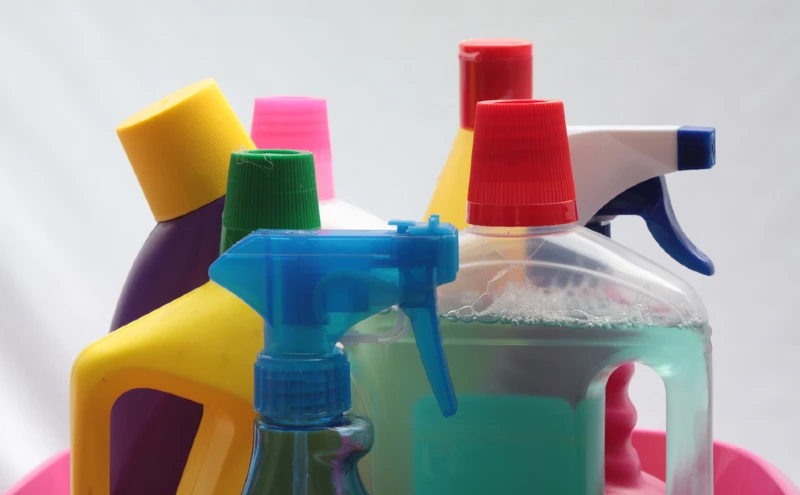
Whenever faced with a draining clog, most people automatically go for chemical draining cleaners to remedy the situation. However, if you have a septic tank, this is not always a good idea. Most conventional draining cleaners are unsafe for septic systems because they can destroy the bacteria ecosystem found inside safety tanks.
Fortunately, there are several septic-safe drain cleaners currently available in today’s market. In this article, we will discuss septic-safe draining products designed for use with septic tanks without upsetting the delicate bacteria balance inside. We will also highlight viable DIY options that you can easily employ at home to unclog your septic tank. Read on to learn more.
What Are Drain Cleaners?
Drain cleaners are cleaning agents formulated to break down grease and organic matter. They can be either chemical or biologically based. Chemical drain cleaners use solvent agents made from petrochemicals and alcohol. Due to their composition, drain cleaners can alter the PH of septic systems so much that when introduced in a septic tank system, they can upset the bacteria balance. This will likely result in expensive repairs, unwanted plumbing issues, or even system failure.
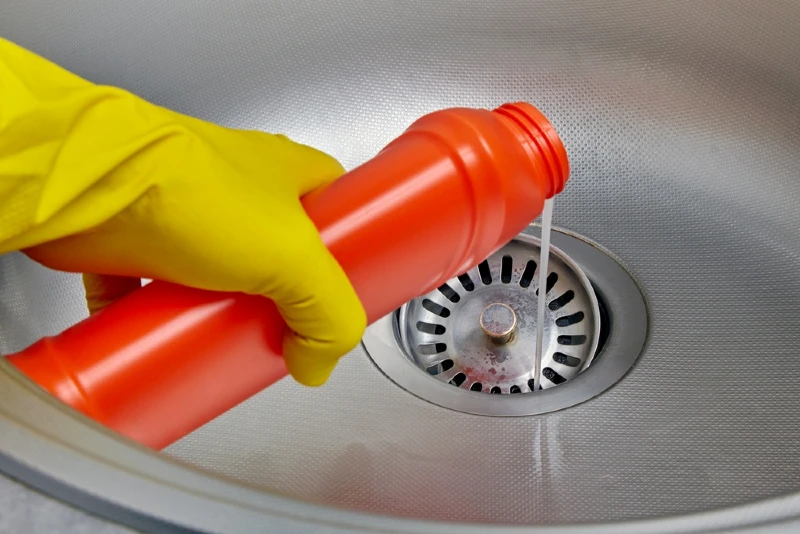
Are Liquid Drain Cleaners Septic-Safe?
The answer to this question is yes and no. It depends on the composition of the ingredients used in the cleaner and how you use the cleaner. As mentioned earlier, septic tank drain cleaners can either be biological or chemical based. Most liquid drain cleaners may be safe for septic tanks, provided they are used as per the manufacturer’s instructions and used sparingly.
Usually, chemical liquid drain cleaners are not ideal for septic tanks because they are harmful to the beneficial bacteria and enzymes that break down sewage and treat wastewater. Manufacturers of commercially sold drain cleaners may have you believe that the solution to a blocked drain is using their products, but most drainage specialists and plumbers would not recommend their use.
Some of the products that you should avoid include phosphates, ammonia, bleach, petroleum-based chemicals, lye, and anything labeled as “antibacterial”. These chemical drain cleaners are especially not recommended if you treat your waste with a septic tank or HSTP, instead of connecting to a council wastewater treatment system.
What About Drano and Liquid Plumr?
The most common drain cleaners in today’s market are Liquid Plumr and Drano cleaning products. The manufacturers of these products claim that they are safe for septic tank use. However, there is still a debate as to whether these liquid cleaners can have long-term effects on a septic tank. Furthermore, many homeowners, especially those with young children, would rather avoid chemical cleaning products for the safety of the home occupants.
Septic-Friendly Methods of Clearing a Clogged Drain
Experts recommend using natural cleaning products whenever possible if you own a septic tank. Thankfully, there are a few DIY and natural cleaning methods that you can use to solve drainage issues in your septic tank.
1. Using a plunger

If you experience drainage issues at home, the first step is to use a plunger. Plungers are usually inexpensive, readily available, and can be used in most drains, including sinks, toilets, and bathtubs. For optimum results, ensure the plunger used is appropriately sized to fit the shape of the drain.
Simply fill a tub or sink with enough water to submerge the plunger bell. This helps to create an airtight seal so that the plunger can work effectively. Once sealed, place the plunger over the drain and vigorously pull and push on the handle to unblock the drain. You may have to repeat the process several times before the clog gets loose.
Once it is lost, you can then proceed to flush the drain with hot water to get rid of any remaining debris in the drain. Remember, it is not wise to use a plunger on your drains if you are also using a liquid cleaner because it will splash on you. In addition, if the plunger does not work, you can always try a drain snake if you have one.
2. Unclog With Hot Water
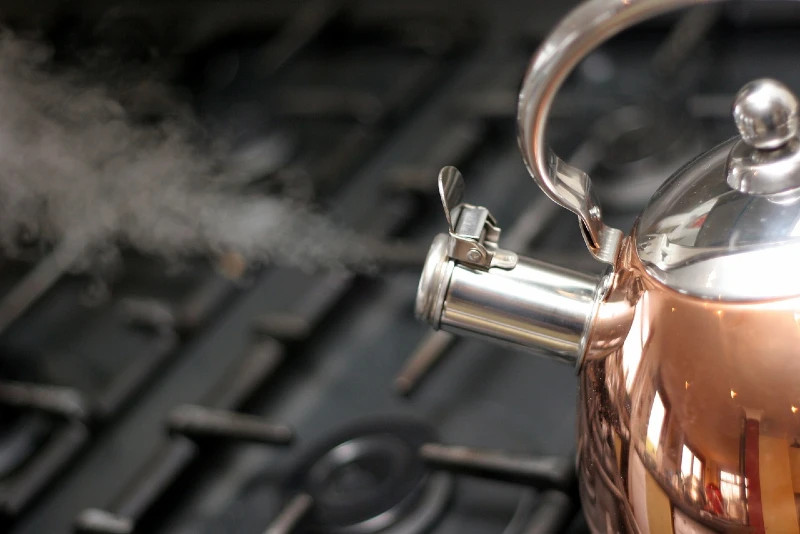
Hot water is perhaps the easiest method of unblocking a clogged drain. It is ideal for drains that are slow but still somewhat draining. It may not work for major drain clogs, but it is effective for smaller clogs, especially if the blockage is caused by a buildup of oil, fat, grease, and soap scum.
Simply pour boiling water down the drain. Allow the water to cool and repeat if needed. You can even add a smidge of septic tank-friendly detergent to help further break down oily substances. Since hot water can soften and damage the PVC pipes, use this cleaning method sparingly so you don’t cause any damage in the end.
3. Baking Soda and Vinegar
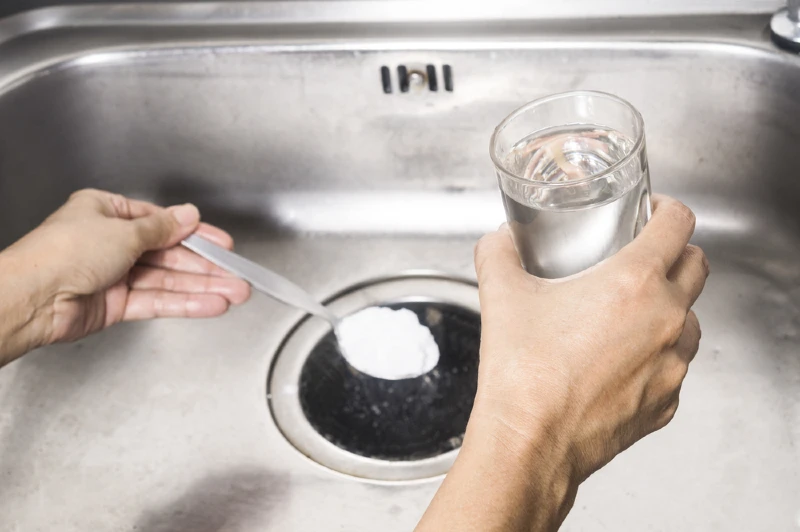
This is one of the most popular DIY cleaning methods for solving clogging issues in the drain. It involves mixing vinegar and baking soda to create a chemical reaction that helps break down clogs in the drain.
To use this unclogging method effectively, simply pour 1/2 cup of baking soda down the drain, then follow it up with ½ cup of vinegar. Use a plug to cover the drain to keep the mixture in and let it sit for at least 30 minutes. Finally, remove the plug cover and flush the drain with a pot of hot water. This should be able to remove any substances that may have been clogging the drain.
4. Lemon Juice and Baking Soda
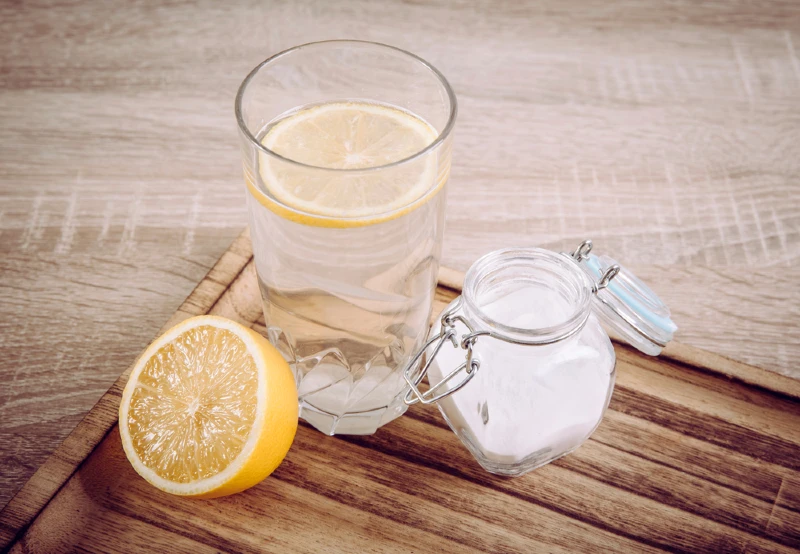
Combining baking soda and lime juice is another effective and septic-safe method of unclogging a blocked drain. The acidic composition of lemon juice will help break down the clog, while the baking soda cleans the drain without incurring any damage to the septic system.
To utilize this method effectively, Mix a ¼ cup of lemon juice with a 1/2 cup of baking soda. Pour the mixture down your drain and let it settle for about 30 minutes, then flush the drain with hot water. You may have to repeat the process several times depending on the toughness of the clog.
5. Salt and Baking Soda

A mixture of common iodized table salt and baking soda can also break down a clog in your drains. The salt works by absorbing moisture content in the drain while the baking soda breaks it down to make it easier to flush the drain.
To unclog a drain with this method, simply mix ½ cup of baking soda with ¼ cup of salt. Pour the mixture down the drain and let it sit for 30 minutes. Flush the drain with hot water and repeat the process several times for tougher blockages.
6. Biological Enzyme Cleaners
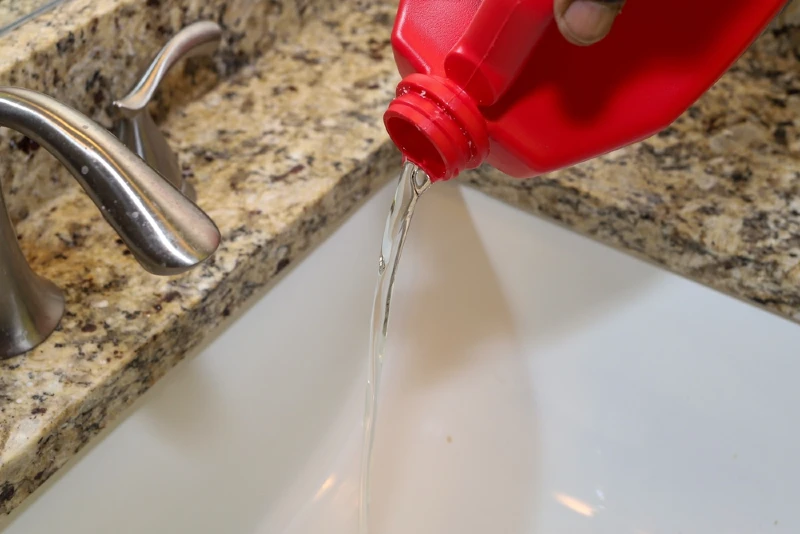
If you are not interested in utilizing DIY home methods to unblock clogs in your drain, use septic-safe drain cleaners made from natural ingredients.
This involves using septic tank enzymes to get rid of clogs by allowing them to eat through gunk or organic blockage. Some of these products, like the Biokleen Bac-Out Drain cleaners, feature enzymatic formulas made from plant extracts. Biological enzyme cleaning products are eco-friendly and do not contain ingredients, like chlorine and ammonia, that can be harmful to septic tanks. They are also biodegradable.
However, be careful to follow the manufacturer’s recommendations for use. Biological enzyme cleaners are routinely used in a preventative capacity to help keep the drains running freely. Experts do, however, recommend that you talk to a septic specialist or a plumber before using enzymes to ensure that you do not upset the delicate balance of bacteria in the wastewater treatment system.
How to Prevent Clogged Drains
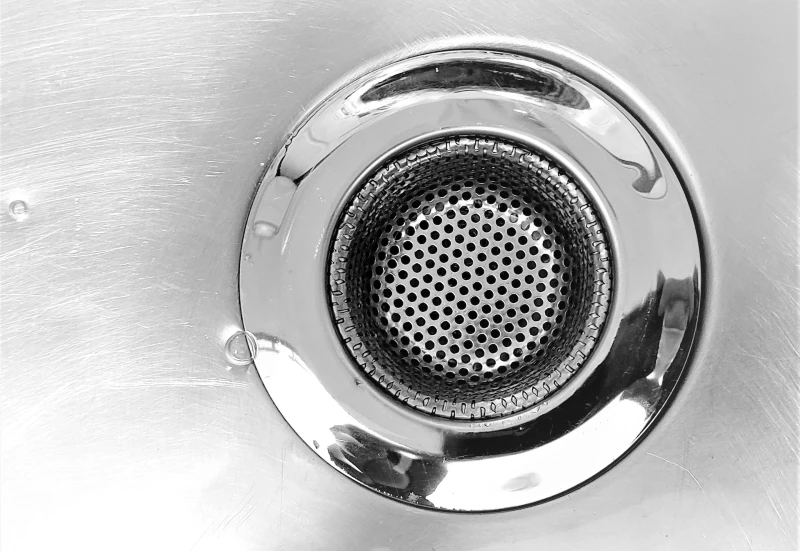
The best way to deal with blockages and drainage issues in your home is to prevent them from happening in the first place. Here are some things you can do to keep your drains clog-free.
- Invest in a drain strainer: This is simply a small mesh screen that can be placed over a drain to prevent debris, such as soap scum, and hair, among others, from going down the drain. This is an ideal tool to have at home, especially if your home occupants have long hair or you live in an area with hard water.
- Clean the drains regularly: As a homeowner, you can save a lot of money from septic tank repair costs if you regularly clean your drains to prevent them from being clogged. You can purchase septic-safe cleaning products from your local store or simply make your homemade drain cleaner using baking soda and vinegar.
- Be mindful of what you flush down the drain: Some of the biggest contributors to clogging issues in a drain include hair, grease, and soap scum, among other debris that gets flushed down the drain. Therefore, you should be careful of what you throw down your drain and try to limit the amount of grease and hair that goes down the drainpipe.
Conclusion
As a septic system owner, you should try as much as you can to avoid using chemical drain cleaners. Sure, some chemical products like those from Drano and liquid Plumr may be effective at clearing out clogs in a drain; however, they contain toxic substances that can destroy the helpful bacteria in a septic tank.
Furthermore, some commercially sold chemical drainers have compounds that are toxic to humans. Therefore, the best way to clear clogs in a drain is to use septic-safe drain cleaning methods. You can simply use a plunger or pour hot water down the drain to loosen the clogs and make it easier to flush. Alternatively, you can use homemade drain cleaners by mixing baking soda with vinegar, salt, or lemon juice.
However, the best way to deal with clogging issues and protect the septic system is to prevent them in the first place. You can regularly clean your tank or buy a drain strainer. You should also be mindful of what you throw down your drain because things like grease and hair can easily block out your drain.
Featured Image Credit: StudioPortoSabbia, Shutterstock
Contents



